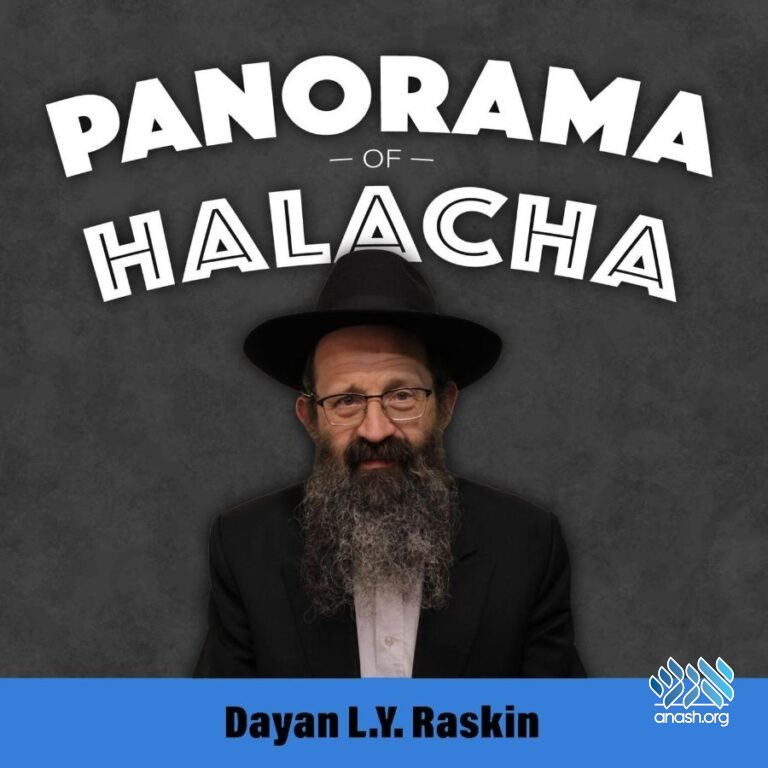Anash.org feature: Dayan Levi Yitzchok Raskin, Rov of Anash in London, explores interesting Torah questions and halachic dilemmas including pouring from a pareve kettle into meat, holding candles while leading a chosson to the badeken, why Chabad doesn’t say “birshus,” and using an oversized mezuzah.
The following issues are discussed by Rabbi Raskin in this week’s episode:
- Having poured hot water from a pareve kettle into a steaming pot of chicken soup – does the kettle become meaty?[1]
- I have plastic containers that were used to store non-kosher foods – including liquid. May I now use them to store kosher foods that include liquid?[2]
- At a Chupah, it is customary for the Unterfirers to carry candles. Is this appropriate for when leading the Chosson to the Badeken, or only when leading Chosson and Kallah to the Chupah? Also: should the candles be kept alight until the end of the entire ceremony? [3]
- At a Shiva house ר”ל, the Davening was held in the adjoining rooms – as in the dining room and in the adjoining lounge. Someone said that it is necessary for ten men to be in one room. Please explain:[4]
- In some circles, when the head of the family is about to recite the brocho Hamotzi before breaking bread, he prefaces this with the word ברשות. Why is this not followed in Chabad?[5]
- The use of oversized Mezuzos has become popular of late. This raises an interesting question: a) the Mezuza should be affixed in the Tefach closest to the outside; b) we affix the Mezuzah in a diagonal position. Now, does the upper end of the Mezuzah also need to be within that first Tefach?[6]
To listen to Panorama of Halacha on a podcast, click here.
- [1] בספר ‘הכשרות’ פ”א סס”ט ממליץ להימנע. אבל בהערה שם מביא שדין ניצוק לחומרא נאמר לגבי פסח ולגבי יין נסך, לא בשאר איסורים.
- [2] בשו”ע יו”ד סי’ ק”ה דן הט”ז בסק”א לגבי כלים שנאסרו ע”י כבישה. וע”ש בערה”ש ס”ק יג.
- [3] מטה משה ח”ג הכנסת כלה סי’ ג.
- [4] ראה שוע”ר סי’ נה סט”ו וסט”ז – שרק אם מראים פניהם מצטרפים.
- [5] דין זה – ברמ”א סי’ קסז סי”ד, ובשוע”ר שם סי”ט. ובהערת המו”ל: עתה כל אחד מברך, אין צריך לזה, ע”כ. וכן נהגו למעשה, שהגברים מברכים לבד. ולענין הנשים, שיש נוהגות לצאת ברכת ‘המוציא’ מבעה”ב, אבל לא שייך בזה ‘בקשת רשות’, כי הן לא יבצעו בפני לבעה”ב.
- [6] ספר אגור באהלך ע’ קעז.


Discussion
In keeping in line with the Rabbonim's policies for websites, we do not allow comments. However, our Rabbonim have approved of including input on articles of substance (Torah, history, memories etc.)
We appreciate your feedback. If you have any additional information to contribute to this article, it will be added below.